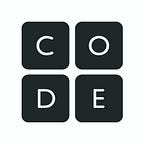How middle school students used computer science skills to give a vintage theater new life online
Monroe, Utah is a small town almost smack-dab in the middle of the state.
Located about 170 miles south of Salt Lake City, the city’s 2,200 residents are spread around just 3.5 square miles, and Monroe has all the trappings of small town charm: there’s a Main Street runs through its center, a ‘50s-style burger joint called Bullies Drive-In, a few mom-and-pop stores that sell groceries and outdoor gear, and of course, the Carol Theater, a charming vintage theater built in the 1940s.
Except… the theater wasn’t always so charming. In fact, it sat empty and lifeless for almost 40 years — at least until Angie Card’s middle school students came along.
Card, who teaches science at South Sevier Middle School, said the theater stopped operating in 1981 and quickly fell into disrepair. There was plenty of interest from people who wanted to get it back up and running, but it needed significant work. For years, no one put in a serious offer or made an earnest attempt to revive it.
So the theater, located on Main Street right next to Bullies Drive-In, sat untouched for decades. “We just had to ignore it and pretend it wasn’t there,” Card said.
In 2016 the theater finally found a buyer — a local real estate agent named David Coe — who wanted to restore it to its former glory. Coe began soliciting help from the community to get the theater back in operation.
“It’s a few blocks from our school, and we decided to step in and see what we could do,” Card said. “We had a meeting with the owner about his vision for the theater, what was needed, and what some of the possibilities were to help. I asked, ‘What can my students do?’”
Card has been teaching computer science since 2013, and she encouraged students to think about how to give the nearly 80-year-old theater a new life online. Using lessons from Code.org’s CS Discoveries curriculum — a year-long introductory computer science course for 6–10th graders — a small group of students used Google Sites and HTML to design, build and customize a website for theater. They also researched and wrote copy about the theater’s history, sold concessions during shows, learned how to operate the projector, and generally maintained an online presence for the theater.
In addition to units on web design, CS Discoveries also includes lessons on physical computing, user-centered design, how to use data to solve real-world problems, the problem-solving process and more. She said students particularly enjoy the problem-solving process guide in Unit 1 of the CS Discoveries curriculum, which they’ve applied to other subjects outside computer science.
“That guide has been our go-to for iterating better versions of everything from clay pot furnaces to school policies,” she said.
Beyond the CS Discoveries curriculum, Card says her students also enjoy the “What Makes a Computer, a Computer?” video in the “How Computers Work” video series, which explains a range of computing topics in 6 short videos.
Card says her district is still in the early stages of incorporating computer science into school curriculums, but many of her students say just getting a taste of computer science made them more interested in the subject overall.
“[Working on the website] made me very interested in computer science,” said Kadence C., who worked on the project when she was in 8th grade and is now a Junior in high school. “My freshman year I took a few computer science classes that I enjoyed a lot … It made me realize [computer science skills] are good and important skills to maintain.”
What started as a quarter-long project has now turned into an ongoing class activity for the past three years, with multiple classes of students working on the project and applying their computer science skills to work on a real, usable website for the beloved community gathering place.
“Students set up social media accounts for the theater and designed the website. They really loved the website design,” Card says. “I just put opportunities out there and let students decide how they wanted to work on it.”
Card says the Carol Theater now needs a new roof and isn’t currently in use, but students still appreciate the opportunity to work on its website. And maybe someday it’ll be up and running once again, showing movies on the big screen.
“When there’s a practical application for computer science — the idea that this will benefit our community — there’s a lot more motivation from students to work on it,“ Card says.
-Kirsten O’Brien, Code.org
If you’re a teacher who wants to bring computer science to your classroom, apply now to attend one of our Professional Learning workshops. Generous scholarships are available in many states.
